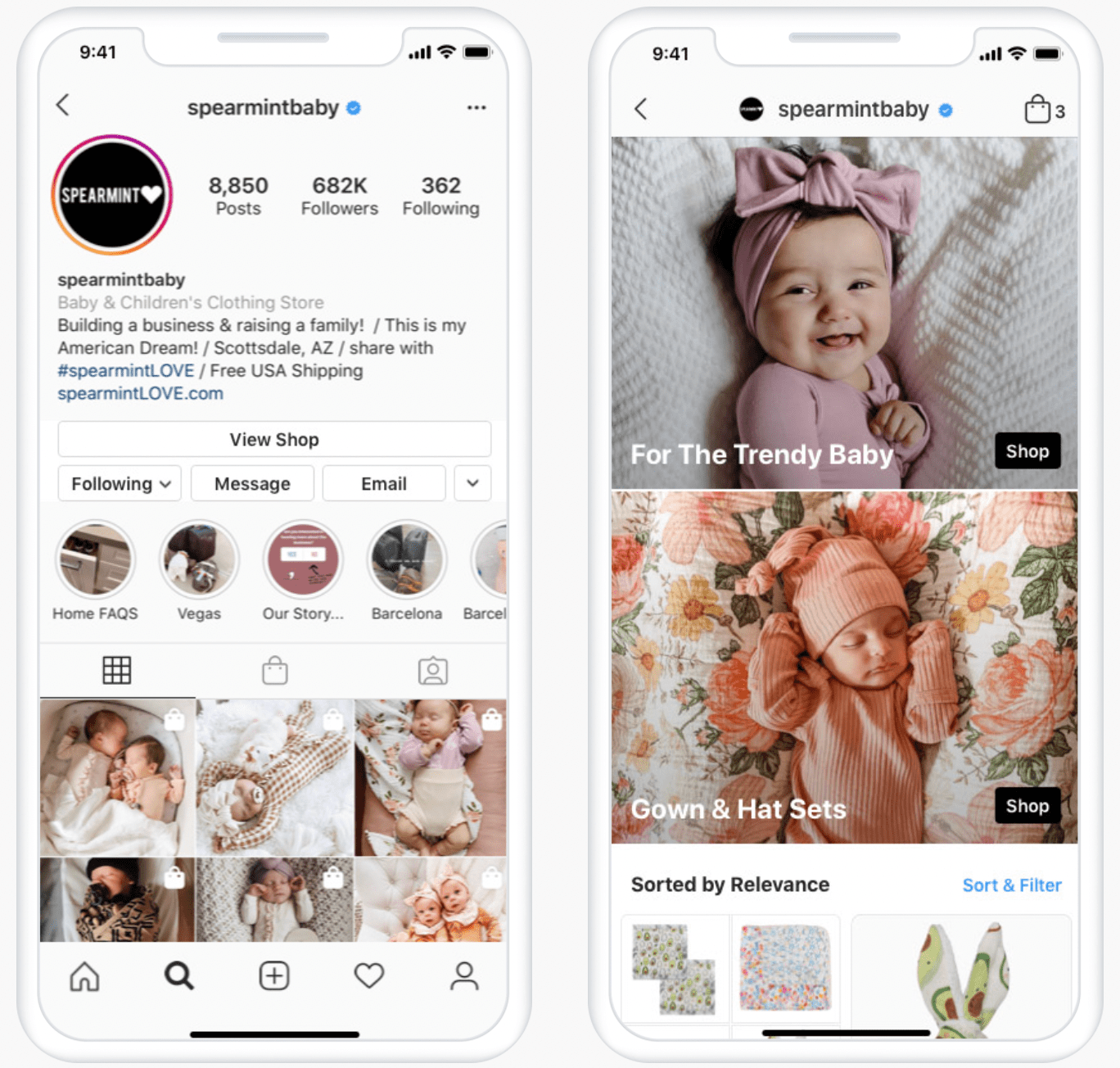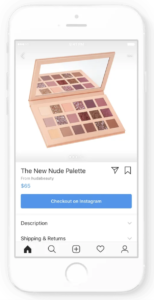We can’t ignore the force of TikTok and Instagram Reels, or how users are scrolling endlessly on these platforms – consuming fun, trending, and inspiring videos. With all the content that’s out there, there’s a huge opportunity for brands to create videos that move beyond driving general brand awareness and begin to more deeply influence purchase decisions on social media.
But don’t just take our word for it. A recent report showed that after viewing a video ad on Instagram, 75% of all users take further action. Of that group, 72% actually buy the product/service from the video. These numbers are impressive but using video to engage with consumers is more than just posting a video clip and hoping for the best. These videos must be done right in order to be effective.
So why would a brand not incorporate video into their strategy after hearing these stats? Common misconceptions and a sense of skepticism that videos are just for awareness and can’t drive that lower–funnel, purchase behavior has been the culprit in preventing brands from putting more time and effort into video. That may all change thanks to a new phenomenon called “Community Commerce.”
Community Commerce – Defined as “entertaining, creator-driven social content featuring brands” the idea, outlined in a recent report from TikTok, sits at the intersection of community, shopping, and entertainment. From a visual perspective, we can imagine it looks like the graphic below.
 The idea of Community Commerce ultimately provides a stronger opportunity for authenticity in advertising due to its relationship between creators and their communities. But where do you start? What are the most important things to keep in mind? Below are six things marketers need to keep in mind when they decide to leverage the power of video on social for ecommerce.
The idea of Community Commerce ultimately provides a stronger opportunity for authenticity in advertising due to its relationship between creators and their communities. But where do you start? What are the most important things to keep in mind? Below are six things marketers need to keep in mind when they decide to leverage the power of video on social for ecommerce.
6 Tips For Creating Video Content That Drives Ecommerce
1. Find, and work with Creators
Creators are the new brand storytellers. They are the bridge to your customer. They bring you closer to your brand’s community and build trust. Creators boost product discovery, educate, and inspire audiences to try new products. They stimulate belonging, information-sharing, and ultimately demand for your product through the powerful influence they can wield.
Both Instagram and TikTok have resources that help connect you with the right creator based on your industry, budget, and business goals.
The wonderful thing about “creators” is that they’re anywhere. Take our client eBay for example. As the original online retailer for new and used goods, eBay’s network of sellers (first-time and experienced veterans) is quite impressive. But when a rise in questions related to selling best practices and shipping tips and tricks began rolling in, the company struggled to find a way to educate this large audience effectively and efficiently. Once more, the message had to be authentic, honest, and avoid feeling like a sales-ploy from the company itself.
Enter: The eBay influencers and “Oh Ship!” campaign
We partnered with real eBay sellers who had their own following and small businesses, asking them to share their best advice, tips, and tricks for selling and shipping after years of being in the eBay marketplace. The result was an engaging, authentic, educational, and cost-effective solution to a common challenge.
Ultimately, it’s important for brands to build a meaningful relationship with creators, allowing them the freedom to express the unique, authentic voices their followers expect. Creators know the platform best and will find their own way to make a brand relatable.
2. Remember That Authenticity Wins
Another way to build trust and connection within your brand’s community is through authentic content. Keeping it real. Showing the true side of your brand to your followers. Authenticity for brands means being more human – displaying enthusiasm, integrity, intention, and intimacy. It’s true when we say, authenticity wins. Every time.
3. Have a ‘Fail Fast’ Attitude
A part of being authentic means a willingness to experiment, fail, learn, and grow. Your videos and content don’t have to be perfect. In fact, you’re likely not to get it right the first time (and that’s okay). Testing is a part of any marketing journey.
It’s also important to keep in mind that videos don’t have to be highly produced, shiny objects that eat up your entire marketing budget (especially if you plan to produce multiple videos). Focusing on scalable, repeatable templates and styles can help you identify what works, and just as important, what doesn’t. In the end, social media is a rapidly-changing environment, and brands need to move fast too, so forget perfection – it will only hold you back. Experiment and learn as you go.
4. Be Native to the Platform
Brands and creators are their most successful on social media when they fit authentically into the environment by creating bespoke, tailored content that feels native to the platform. This should be a given, but too many brands dismiss this simple strategy and mindlessly charge forward with the same blanket ads in every channel because it’s the easier approach. However, marketers will find greater success when they stop “going through the motions” and instead create content with a purpose that’s worth creating.
5. Tap Into Shoppable Features
Make your products easy to discover by tapping into the shoppable features of Instagram and TikTok. The top three features: Your Shop, Product Tags and Checkout.
Your Shop – Brands can curate a list of shoppable product catalogs that are directly accessible for customers in their profile page. Either by clicking “View Shop” through Instagram or the shopping bag icon on TikTok. And even better — brands with Instagram Shop can also be featured on the Instagram Shop tab. The Shop tab is a seamless way for users to discover new products on Instagram, with the option to browse and explore Shops, Editors’ Picks, Collections, Guides and Videos.
 Product Tags – Product Tags (only available on Instagram) let you highlight items from your catalog directly in your organic posts, live videos and paid ads, so people can easily tap, learn more, browse other products and then buy the product right then and there!
Product Tags – Product Tags (only available on Instagram) let you highlight items from your catalog directly in your organic posts, live videos and paid ads, so people can easily tap, learn more, browse other products and then buy the product right then and there!
 Checkout –Make purchasing your products even easier by enabling checkout in Your Shop so users can buy products directly in just a few taps without leaving the app.
Checkout –Make purchasing your products even easier by enabling checkout in Your Shop so users can buy products directly in just a few taps without leaving the app.

6. Use the Power of Organic + Paid
Your customers want a consistent and connected experience with your brand, which is why you can’t focus on paid and organic in silos. They must work together. After consumers see a paid ad in their organic feed, they are likely to click through to your organic profile for social proof. Consider it like a new friendship. Consumers are looking at your profile, vetting you to see if you’re someone they can trust. Subconsciously, they’ll likely ask themselves questions like, “Do I like this brand? Can I see myself using this product? Am I entertained and inspired? Do I want to follow them? Do I want to be a part of this community?”
But how do you answer these questions? It’s important for brands to build a community that will support and educate their followers. Consider creating fun and entertaining organic content alongside your paid advertising efforts to demonstrate what you stand for, invent new memes and challenges, and share information, in order to pass the initial brand consideration stage.
The Takeaway
In a world of endless scrolling and heightened competition for consumer mindshare, creating video content that quickly resonates and drives action is more critical than ever. The elements of sight, sound and motion make video a powerful medium, but it’s the power of community that enables video content to drive business impact. By building a video content strategy centered around the concept of Community Commerce, and layering in shoppable tools offered by platforms, brands can deliver increased ecommerce revenue while also building more deeply engaged brand advocates.


